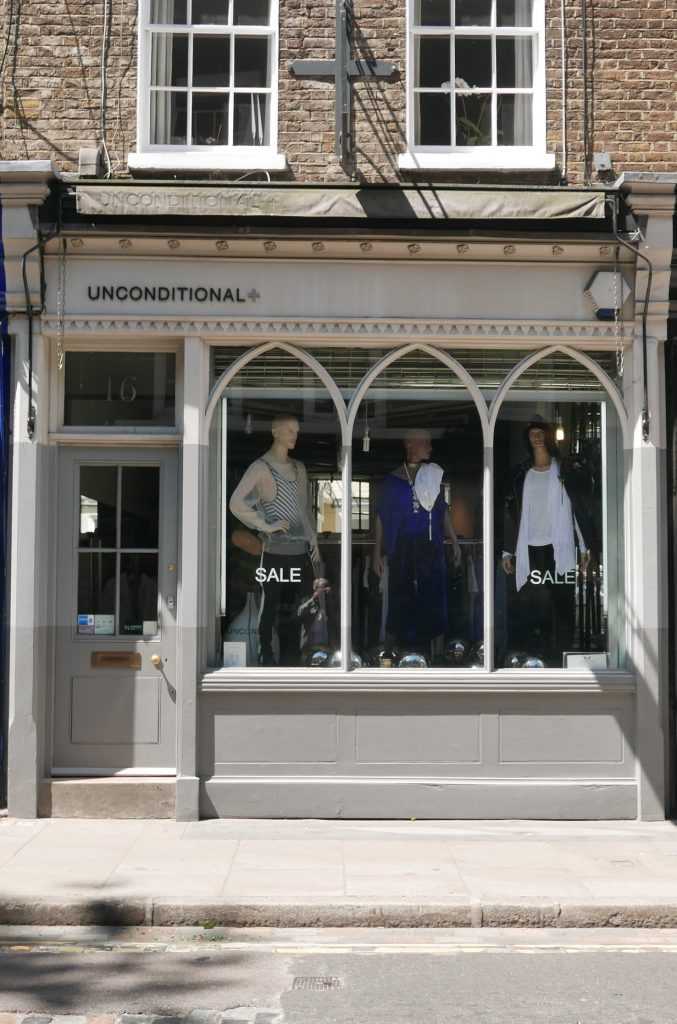The stall riser is the part of the traditional shop-front directly below the shop window. In Georgian, Victorian and Edwardian shopfronts, the stall riser normally comprises traditionally detailed, painted joinery with moulded or flush-beaded panels corresponding to the original divisions of the shop-window above, with a plinth-board beneath and running along its base between the pilasters to each side. In late Victorian and Edwardian shopfronts the stall riser may be made of polished granite or marble – sometimes plain, sometimes panelled, or faced in plain or decorative glazed tiles and sometimes incorporating the name of the business. For painted timber stall-risers, the plinth-board is an essential feature, and can usefully take-up a slope or any unevenness in the adjacent footway. The panels in painted timber stall-risers should comprise traditionally detailed joinery and should avoid planted, timber mouldings fixed to plain boarding. 16 Monmouth Street and 17-19 Shelton Street are excellent examples of attractive and authentic stall risers.
In modern buildings in historic settings, the inclusion of a well detailed stall-riser of contemporary design in the shop-front is to be preferred to the shop window extending down to floor or footway level.





